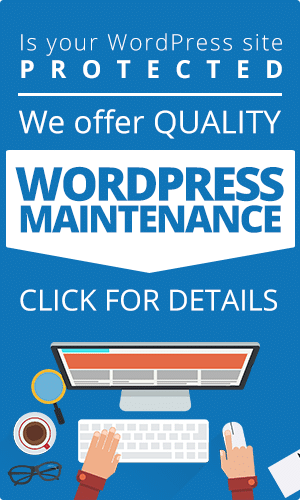Whether you own a website, a landing page, or an online store, they consist of various design elements.
Some are meant to catch a website visitor’s attention, while some are designed for them to take action. As for the latter, the best way to compel your site visitors to do something is through your call-to-action buttons.
What is a CTA Button?
A call-to-action (CTA) button is an interactive web design element. Its primary purpose is to compel your site visitors to take action.
For example, a “Proceed to Checkout” button is a CTA button. That’s because it encourages a person to complete his purchasing journey in a particular online store.
By looking at it, you can quickly discern what makes a call-to-action effective:
- It is action-driven
- It is quick and simple
It also tells what people are expected to do after clicking the CTA button. In this case, a person is likely to pay for his orders and fill in his delivery information.
As soon as the customer completes this process, it is considered a successful conversion.
However, conversion is not just about generating sales. Depending on your marketing goal, you can use different marketing messages on your CTA button.
If you run a blog, one of your marketing goals is to turn readers into email subscribers. As such, you need a CTA button that will encourage them to subscribe to your newsletter.
As for a company website, a conversion could mean acquiring new clients. That’s why you will need a CTA button that will encourage site visitors to send you an inquiry or call your sales team.
Benefits of Having an Effective CTA
Here’s the thing: People are bombarded by a slew of marketing messages, all day, every day. As such, you need something that will catch their attention and compel them to take action.
Enter the CTA button.
If that rationale is not enough to convince you, here are three reasons to design a compelling call-to-action:
Direct People’s Actions
CTA buttons are designed to let people know what the next step is. Luckily, this is something that you can use in your favor. That’s because you can direct them to your desired action.
It can be subscribing to your newsletter, sending an inquiry, or buying your product.
However, you have to meet people’s expectations. If your CTA button means “Download PDF,” then they should be able to download a PDF.
Break Decision Fatigue
Decision fatigue refers to the dwindling quality of decisions that a person makes. This often occurs after a long session of decision-making. This also explains why we usually pick the same product from the same brand whenever we do grocery shopping.
To beat that, you need a CTA button that tells people exactly what they need to do and where to go next. Using our previous example, “Proceed to Checkout” is better than “Next” because it specifies the next step.
Business Growth
Because a CTA button can attract a person’s attention and compel them to take your desired action, it can lead to business growth. It can be an increase in audience or sales.
So, if your conversion rate is not getting any traction, it can be because your CTA button is not click-worthy.
8 Tips to Design a Click-worthy CTA Button
According to award-winning UX/UI designer Michelle Dipp, a powerful CTA button has vital aspects. This includes size, shape, color, placement, and microcopy.
If you can make all these work together, you will have a button that will make people click it. The question is… How?
Make it Look Clickable
One way to make your CTA button click-worthy is to make it look clickable. Doing so makes people perceive that a design element is interactive. Otherwise, people will think that the button is just a picture.
One excellent way to do that is to add some 3D effects. A slight gradient or small shadow makes an element look salient. As such, your site visitors can easily see that the button is clickable.
But what if the 3D effect does not suit the overall look of your web page? Consider changing the shape of your button — preferably rounded. That’s because the human brain is wired to stay away from sharp edges, which we often see on rectangular buttons.
Use Contrasting Colors
Another way to make your button clickable is to use contrasting colors.
However, picking a color is more than just using whatever palette you like. There is also color psychology that you need to consider. After all, people perceive the meaning of color differently.
For instance, the color red means stop in many countries, but it means luck and prosperity.
Nonetheless, the rule in choosing a color for your CTA is that you should use a contrasting color. If you have a white background, a blue button can work unless you use a blue palette for your web design.
If that is the case, you might want to consider using a yellow-colored button instead.
Implement Action-driven Words
As you already know, CTA buttons are meant to compel people to take action. Thus, it makes sense that you use imperative words in your button microcopy.
However, something as minimal as “Buy” and “Next” will not be enough. Your microcopy should also be clear.
That said, you have to be specific about what you want people to buy. And maybe the word “Buy” is not the right call to action. Perhaps you can use “Add to Cart” or “Proceed to Checkout.” That way, people would know what to expect when they click the button.
Use the Right Size
As mentioned earlier, a CTA button’s size is one of its essential aspects. As such, you would like your CTA button to be large enough to draw your site visitors’ attention.
That’s because the more significant an object, the more noticeable it becomes.
The size of a design element also helps you arrange other UI components on your page according to their importance. After all, the bigger a design element is, the more important it looks like.
So, while you want your CTA button to be noticeable, you would not want it to spoil your page’s information hierarchy.
Consider User Flow
Keep in mind that your CTA button is a part of an entire page. That’s why you must put it in the right place. News flash: It is not always above the fold.
That said, you should keep your user flow in mind. Also known as user journey, it is a path that a person follows when completing a specific task.
An excellent example would be making an online purchase. A person would browse for products, add them to a shopping cart, and pay for them. Hence, you need to design your page to make it easy for people to do each part of the process.
White Space is Your Best Friend
Also known as negative space, it is the gap between design elements. To people, it is just space, but it can mean a lot when designing your CTA button.
For one, it helps emphasize a design element. White space also makes it easier for people to perceive an interactive element. That’s because white space prevents visual clutter, making your button easy to notice.
Add Extra Information
Of course, no one can make a person click your CTA button unless they know what they are getting into. And in case you are unaware, your microcopy is often not enough.
For instance, your CTA microcopy is “Subscribe Now!” But what are people subscribing for?
This is where adding extra information can be helpful. In this case, you can write a blurb about how 15,000+ people get updated whenever you have a new post because they are subscribed to your newsletter.
Doing this impacts your email list for two reasons:
- People would not want to miss first dibs, like what your over 15,000 subscribers are enjoying.
- People have a reason to subscribe to your newsletter.
Always be Testing
Just because you can master the first seven tips in designing a CTA button does not mean it is the end of the story.
Keep in mind that your button is integral in generating conversions on your website. Hence, you need to keep on tweaking to know what will make people click it.
And what better way to do that than conducting a multivariate test? It is when you run a test to know which design elicits your desired actions more.
The simplest way to know which button design is better is to live test your call to action. For instance, you have a blue subscribe button. Let it run for two weeks and do the math to know your conversion rate.
And then change the button color to lime green and let it run for two weeks. Do the math again to know your conversion rate.
From there, you can make a comparison and see which button color drives more clicks.
Remember: Only test one element at a time. That way, you would know what design factor made people tick.
Conclusion: Know Your Goals
The key to designing an effective CTA button is to be clear with your goals. Doing so can help you figure out the following aspects of this UI element:
- Color
- Microcopy
- Size
- Shape
- Placement
After all, the role of a CTA button is to compel people to take action. And you cannot do that unless your button is noticeable, has action-driven text, and looks clickable.
Need help with your website design? Check out our WordPress website design services and get in touch. We’d be honored to work with you!






